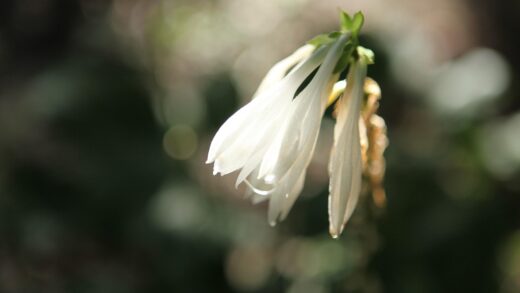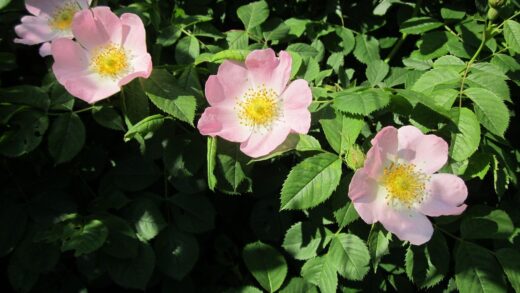While the clusius-tulip is celebrated for its relative resilience and vigor compared to its more delicate hybrid relatives, it is not entirely invulnerable to the array of diseases and pests that can afflict garden bulbs. A proactive and observant approach is the cornerstone of keeping these botanical treasures healthy. Understanding the potential threats allows a gardener to implement preventative measures and to act swiftly should a problem arise, minimizing damage and preventing the spread of issues throughout a prized collection. The best defense is always good horticultural practice: creating an environment where the plants are so healthy and robust that they are naturally more resistant to attack. This involves careful attention to soil, siting, and sanitation from the very beginning.
The most significant threats to the clusius-tulip are often fungal in nature, thriving in the cool, damp conditions that can characterize the spring growing season. Diseases like tulip fire can be particularly devastating, capable of quickly disfiguring and weakening the plant. The key to managing these fungal pathogens lies in prevention, which includes ensuring excellent air circulation around the plants, avoiding overhead watering, and practicing good garden hygiene. By making the environment less hospitable to fungi, you can significantly reduce the likelihood of an outbreak.
Pests also present a challenge, with threats coming from both above and below the ground. Underground, the bulbs themselves can be a tempting meal for rodents like voles, mice, and squirrels, especially during the lean months of winter. Above ground, the tender new growth in spring can attract sap-sucking insects such as aphids. While these pests can cause direct damage, they also pose a secondary threat as vectors for viral diseases, which can be even more debilitating to the long-term health of the bulb.
Ultimately, maintaining the health of clusius-tulips is a holistic endeavor. It starts with sourcing high-quality, disease-free bulbs and planting them in a well-prepared site that meets their cultural needs. It continues with regular monitoring throughout the growing season, allowing for the early detection of any problems. A healthy, stress-free plant is inherently better equipped to fend off both diseases and pests. This integrated approach, combining prevention with vigilant observation, is the most effective strategy for ensuring your tulips remain a vibrant and trouble-free feature of the spring garden.
Fungal diseases and prevention
The most notorious fungal disease to affect tulips, including Tulipa clusiana, is tulip fire, caused by the pathogen Botrytis tulipae. This disease can have a devastating impact on a planting. The initial symptoms often appear as emerging shoots that are twisted, withered, or stunted. As the plant develops, leaves and stems may show greyish, fuzzy mold patches and brown, scorched-looking spots, giving the disease its name. The flowers can also be affected, developing discolored specks or failing to open properly, and the bulb itself can become rotten.
More articles on this topic
Prevention is by far the most effective strategy against tulip fire, as it is very difficult to control once established. The disease thrives in cool, damp, and stagnant conditions. Therefore, planting bulbs in a location with good air circulation is crucial to allow foliage to dry quickly after rain. Spacing the bulbs appropriately to avoid overcrowding also contributes to better airflow. Furthermore, it is important to avoid excessive nitrogen fertilization, as this produces soft, lush growth that is more susceptible to fungal infection.
Good garden sanitation is paramount. If any signs of tulip fire are detected, the affected plant should be removed immediately and disposed of—do not add it to your compost pile. This includes digging up the bulb, as the fungus can produce small black resting bodies called sclerotia, which can survive in the soil for several years and infect subsequent plantings. In the autumn, it is wise to clear away all old plant debris from the tulip bed to reduce the amount of overwintering fungal spores.
Crop rotation is another important preventative measure. If you have had an outbreak of tulip fire, avoid planting tulips or other susceptible bulbs in the same spot for at least three to four years. This helps to break the life cycle of the pathogen in the soil. Starting with certified disease-free bulbs from a reputable source is also a critical first step, as it ensures you are not introducing the disease into your garden from the outset.
Common insect pests
Aphids are one of the most common insect pests you might find on clusius-tulips during the spring. These small, sap-sucking insects tend to congregate on the tender new leaves and flower buds, feeding on the plant’s juices. A small number of aphids is unlikely to cause significant harm, but a heavy infestation can lead to distorted growth, yellowing leaves, and a general lack of vigor. The sticky “honeydew” they excrete can also promote the growth of sooty mold.
More articles on this topic
The primary concern with aphids is not the direct damage they cause by feeding, but their potential to transmit viruses from one plant to another. Tulip breaking virus, for example, is spread by aphids and causes the iconic streaked or “broken” colors in tulip petals, but it also severely weakens the bulb over time, leading to its decline. For this reason, controlling aphid populations is important for the long-term health of your tulip stock.
Managing aphids can often be achieved without resorting to harsh chemical pesticides. A strong jet of water from a garden hose can be effective at dislodging them from the plants. Encouraging natural predators in your garden, such as ladybugs, lacewings, and hoverflies, is a highly effective and sustainable long-term solution. You can attract these beneficial insects by planting a diverse range of flowering plants that provide them with nectar and pollen.
For more severe infestations, an application of insecticidal soap or horticultural oil can be used. These products work by smothering the soft-bodied insects and have a lower impact on beneficial insects and the wider environment compared to broad-spectrum insecticides. It is important to apply these treatments thoroughly, ensuring you cover all surfaces of the plant, including the undersides of leaves where aphids often hide.
Below-ground threats to bulbs
The nutrient-rich bulbs of the clusius-tulip can be a highly desirable food source for a variety of burrowing and digging animals. Voles, which are small rodents that create tunnels underground, can be particularly destructive as they can consume entire plantings of bulbs from below without leaving any visible trace on the surface until the plants fail to emerge in the spring. Mice and chipmunks can also tunnel to reach bulbs or steal those that are planted too shallowly.
Squirrels are another major culprit, known for their habit of digging up freshly planted bulbs in the autumn. They are often attracted to the disturbed soil and can quickly undo a day’s worth of planting work. While they may not eat all the bulbs they dig up, their activity can leave your carefully placed bulbs scattered and exposed on the surface.
There are several strategies to protect your bulbs from these subterranean and surface-level threats. Planting the bulbs at a proper, deep level—around 15-20 cm—can make them less accessible and less detectable to digging animals. For very persistent problems, the most effective physical barrier is to plant the bulbs inside a wire mesh cage. You can create a cage from hardware cloth to line the planting hole on all sides, including the top, before backfilling with soil.
Deterrents can also be effective. Inter-planting tulips with bulbs that are known to be repellent to rodents, such as daffodils (Narcissus), alliums, or fritillaries, can sometimes discourage them from browsing in the area. Applying a dusting of cayenne pepper on the soil surface after planting or using commercially available granular repellents can also provide a temporary deterrent, though these may need to be reapplied after heavy rain.
Viral diseases and their management
Viral diseases can be a serious issue for tulips, leading to a gradual decline in the health and vigor of the bulbs. The most famous of these is the Tulip Breaking Virus (TBV), which causes dramatic streaks and feathering patterns of different colors on the flower petals. While historically this effect was prized during “Tulip Mania,” it is in fact a sign of a disease that weakens the bulb, reduces its ability to multiply, and eventually leads to its demise. Other viruses can cause symptoms such as leaf mottling, distorted growth, and reduced flowering.
Viruses are systemic, meaning they infect the entire plant, and there is no cure for an infected bulb. Once a plant is infected, it will remain so for the rest of its life and can act as a reservoir for the disease to spread to other healthy plants. The primary mode of transmission is through sap-sucking insects, particularly aphids, which pick up the virus from an infected plant and transfer it to a healthy one as they feed. Viruses can also be spread mechanically on contaminated tools.
The management of viral diseases is based entirely on prevention and sanitation. The first and most critical step is to be ruthless in rogueing out any suspicious-looking plants. If you see a tulip with unexplained color breaks, mottling on the leaves, or stunted, deformed growth, you should dig it up immediately—bulb and all—and destroy it. Do not compost it. This prevents it from being a source of infection for the rest of your collection.
Controlling the aphid populations that spread the viruses is the second key pillar of prevention. By keeping aphids in check through the methods described earlier, you can significantly reduce the rate of virus transmission in your garden. Finally, practicing good tool hygiene by regularly cleaning and disinfecting your pruners and trowels, especially after working with any potentially diseased plants, can help prevent the mechanical spread of these incurable diseases.




















